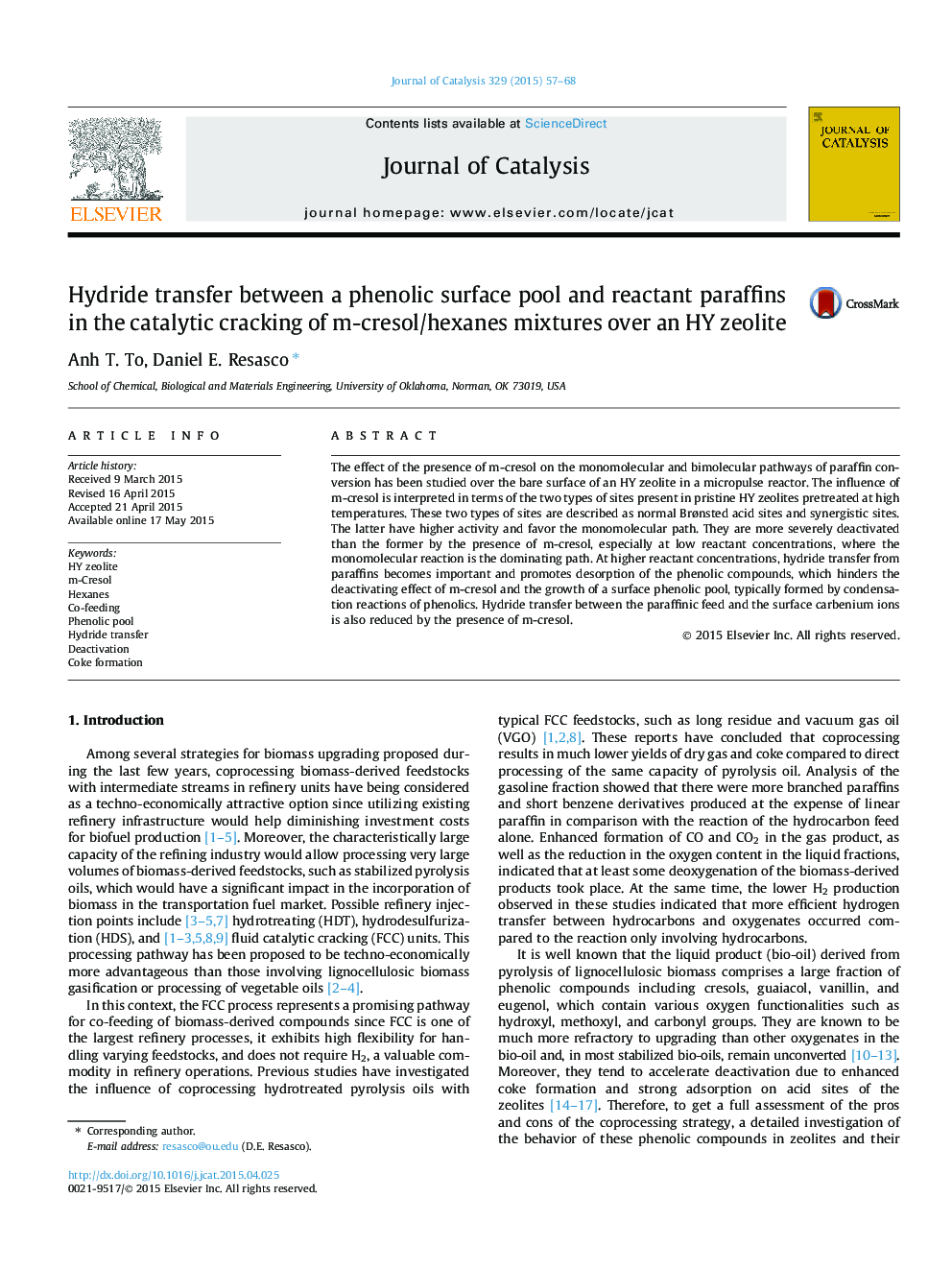| Article ID | Journal | Published Year | Pages | File Type |
|---|---|---|---|---|
| 60795 | Journal of Catalysis | 2015 | 12 Pages |
•Hydride transfer enhanced by increasing concentration and using a better hydride donor.•Co-feeding cresol deactivates protolytic cracking and dehydrogenation paths.•Enhanced hydride transfer from paraffin inhibits deactivation by cresol.•The surface phenolic pool from cresol condensation is a hydride acceptor.•Hydride transfer from paraffin to phenolic pool promotes desorption of phenolics.
The effect of the presence of m-cresol on the monomolecular and bimolecular pathways of paraffin conversion has been studied over the bare surface of an HY zeolite in a micropulse reactor. The influence of m-cresol is interpreted in terms of the two types of sites present in pristine HY zeolites pretreated at high temperatures. These two types of sites are described as normal Brønsted acid sites and synergistic sites. The latter have higher activity and favor the monomolecular path. They are more severely deactivated than the former by the presence of m-cresol, especially at low reactant concentrations, where the monomolecular reaction is the dominating path. At higher reactant concentrations, hydride transfer from paraffins becomes important and promotes desorption of the phenolic compounds, which hinders the deactivating effect of m-cresol and the growth of a surface phenolic pool, typically formed by condensation reactions of phenolics. Hydride transfer between the paraffinic feed and the surface carbenium ions is also reduced by the presence of m-cresol.
Graphical abstractFigure optionsDownload full-size imageDownload high-quality image (31 K)Download as PowerPoint slide
